You are here
History mausoleum Коzу-Korpesh & Bayan-Sulu.
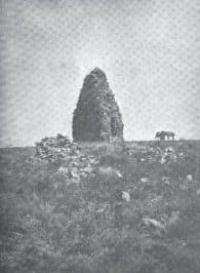
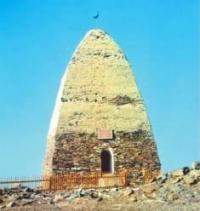
Kazakhstan Tour & Travels.
“On the bank of the Ayaguz River, which flows into Lake Balkhash, there is a pointed building, very carefully built of smooth stone slabs. There are three stone statues in it, of which two, according to the Kirghiz Cossacks, depict lovers of Bayan Khan and Kuz-Kur-pyach, glorified in fairy tales, and the third - their maid. Those who believe in the authenticity of their images make sacrifices to them"
Levshin A. I. "Description of the Kyrgyz-Cossack or Kyrgyz-Kaisak mountains and steppes." Almaty. Sanat. 1996.
Trip to Mausoleum Коzу-Korpesh and Bayan-Sulu.
Tombstone of Kozy-Korpesh and Bayan-Sulu, which is located on the right elevated bank of the Ayaguz River, opposite the Tansyk railway station. The mausoleum was built of slate slabs with clay mortar. The exterior of the building is a composition, square in plan, crowned with a high conical dome.
The total height of the structure is 14 meters. The transition from a square to a cone was made by overlapping or stepped masonry - a characteristic technique in the form of a false vault that existed in the building art of ancient Kazakhstan in the pre-Islamic period (Vth - XXth centuries).
Ch. Valikhanov, attaching great importance to this rare monument of ancient architecture, had a strong desire to capture it on paper. However, bad weather and the flood of the Ayaguz River prevented him from realizing this intention.
Having no funds to cross to the right bank of the Ayaguz, he drove on, postponing a close examination of the monument until the next time. Apparently, Ch. Valikhanov returned to the monument in the autumn of the same 1856, after completing his trip to Issyk-Kul and Gulja.
This is evidenced by his sketch of stone sculptures, made in 1856. The monument of Kozy-Korpesh and Bayan-Sulu was described by members of the academic expeditions of 1768 - 1774. X. Bardanes and Academician I. P. Falk, Major General S. B. Bronevsky, Academician A. I. Shrenk, P. P. Semenov-Tyan-Shansky, G. N. Potanin.
Special articles were devoted to this monument by scientists: Academician V.V. Radlov, N. Abramov, B. Baranov, N. Pantusov, Broido and others. Especially valuable is the record of S. B. Bronevsky, reproducing the ancient historical legend of the Kazakh people about the monument of Kozy-Korpesh and Bayan-Sulu.
S. B. Bronevsky gives a detailed legend about the love of Kozy-Korpesh and Bayan-Sulu, about the erection of tombstones and stone statues in their memory, and says that there are songs about these monuments composed by Kazakh akyns, which are sung to the accompaniment of kobyz. (See: S. B. Bronevsky. Notes on the Kirghiz-Kaisaks of the Middle Horde - 0Z, St. Petersburg, 1830, part 43, pp. 252 - 256).
However, in the notes of S. B. Bronevsky one inaccuracy crept in. At the tomb there were not two female statues, as the author testifies, but three of which, according to folk legend, one depicted Bayan-Sula, the other - her sister Ayagyz, the third - her aunt, zhenge (according to Bronevsky, a nanny).
The male statue, according to the Kazakh folk legend, depicted the Kozy-Korpesh himself. So they are described in all versions of the poem "Kozy-Korpesh n Bayan-Sulu", in particular, in its best version, published by I. N. Berezin ("Turkish Reader", part III, p. 162).
Stone sculptures stood at the tomb (its eastern outer wall) back in the time of Ch. Valikhanov, who managed to sketch them in the indicated group. But he sketched the male statue already without a head (see his sketch in this edition).
In the 50s of the XIXth century, A. S. Uvarov wanted to transfer them to the Moscow Historical Museum, but did not find support from the authorities in transporting the statues to Moscow. But the tsarist government willingly helped to take some of the statues to Germany.
(See: I. A. Kastanye. Antiquities of the Kirghiz steppe and the Orenburg region. - Proceedings of the Orenburg scientific archive commission. 1910, issue 22, p. 253). On behalf of G. N. Potanin, the monument was last examined by A. N. Beloslyudov during his expedition in the area of Lake Balkhash (1917).
Beloslyudov writes: “I visited the Kozu-Korpech monument twice. There are no more stone women ... two women from the monument were taken to Germany ”(Letter No. 36 of A.N. Boloslyudov to G.N. Potanin. January 9, 1918 NBTGU, Archive of G.N. Potanin).
From this it can be seen what great importance the scientists attached to the monument of Kozy-Korpesh and Bayan-Sulu, considering it one of the rare architectural monuments created by the ancient Kazakh tribes.
Since this series of monuments reflects the history of Kazakhstan in the pre-Islamic period, the dating of V.V. Radlov, who dated the Kozy-Korpesh monument to the 17th century, is incorrect. (See: “Notes of Academician Falk’s Journey”. PSUP, vol. VII, St. Petersburg, 1825, p. 58; N. Abramov.
Stone pyramid of Kuzu-Kurpech and Bayan-Sulu in the Kyrgyz steppe. ZVORAO, 1858, part 1 2, pp. 58 - 60; E. Varanov, Kuzu-Kurpech and Bayan-Sulu (Kyrgyz folk tradition), Niva, 1899, letter, appendix, book 2, pp. 307 - 347;
N. N. Pantusov, Kyrgyz folk legend about the grave of Kozu-Korpech and Bayan-Sulu, KSG, 1899, no. Castagne, Antiquities of the Kirghiz Steppe and the Orenburg Territory, Proceedings of the Orenburg Scientific Archival Commission, 1910, issue 22, pp. 252 - 253, 274 - 292).
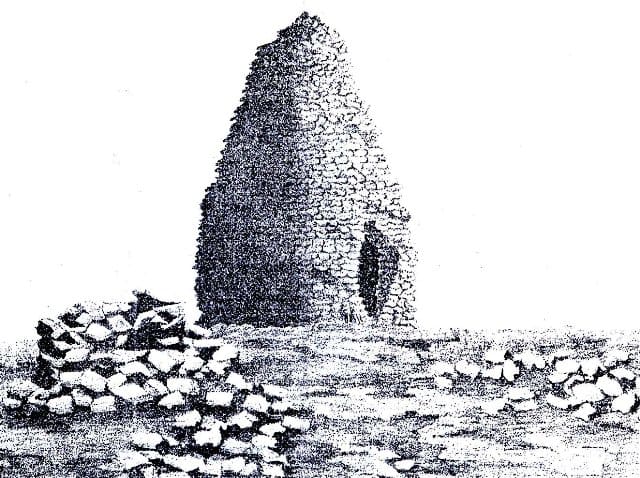
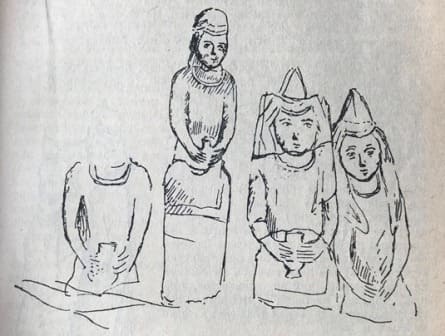
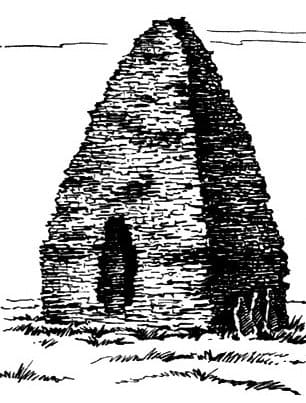
Authority:
Chokan Valikhanov. Comments. "Diary of a trip to Issyk-Kul." 1856 Collected works in 5 volumes. 1985 Volume 1. Page 306 - 357.







